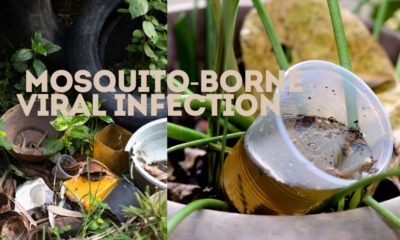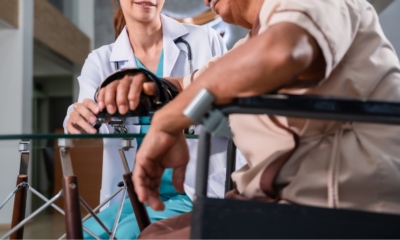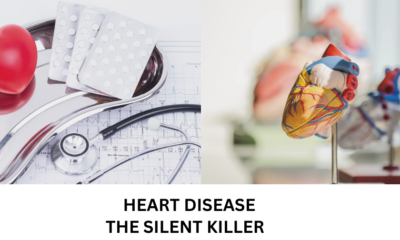Public Health
Malaria Prevention: Strategies for Travelers and Residents in Endemic Areas

According to the World Health Organization (WHO), there were 249 million cases of malaria in 2022, with an estimated 608,000 deaths, most of which occurred in Africa, accounting for about 95% of global malaria deaths. This has remained one of the most significant public health challenges globally, particularly in sub-Saharan Africa, where it disproportionately affects children under five and pregnant women. This news report provides an in-depth analysis of the most current strategies for preventing malaria for travelers visiting endemic areas and residents living in those regions, drawing on the latest data, expert recommendations, and public health strategies.
Malaria Prevention for Travelers
For travelers planning to visit malaria-endemic regions, prevention strategies begin well before the journey. Key measures include:
1) Pre-Travel Consultation and Medication: Before traveling, it is crucial to consult a healthcare provider to understand the malaria risk specific to the destination, the type of accommodation, and the activities planned. The CDC recommends using resources like the Yellow Book for detailed malaria prevention information by country, including drug resistance data and recommended medications. Chemoprophylaxis is often necessary; options include atovaquone-proguanil, doxycycline, or mefloquine, which must be taken as prescribed starting before travel, during the stay, and continuing after return to ensure complete protection.
2) Mosquito Bite Prevention: Reducing mosquito exposure is essential. The CDC suggests using Environmental Protection Agency (EPA)-registered insect repellents containing DEET, picaridin, IR3535, oil of lemon eucalyptus, or para-menthane-diol (PMD). Wearing long-sleeved clothing, sleeping under insecticide-treated bed nets, and staying in well-screened or air-conditioned rooms are also vital measures.
3) Awareness of Malaria Symptoms and Rapid Response: Despite preventive efforts, no method offers 100% protection against malaria. Travelers should be aware of symptoms such as fever, chills, headache, and muscle pain. They should also seek immediate medical attention if symptoms appear during or after their trip, as malaria can remain dormant for up to a year.
Malaria Prevention for Residents in Endemic Areas
Residents of malaria-endemic regions face a constant threat of infection and must employ comprehensive prevention strategies to reduce transmission. The WHO recommends a combination of approaches:
1) Vector Control Measures: Vector control is one of the most effective strategies. The primary methods include using insecticide-treated nets (ITNs) and indoor residual spraying (IRS). ITNs provide a physical barrier and kill mosquitoes upon contact, while IRS involves spraying insecticides on indoor walls, where mosquitoes often rest. These interventions have significantly reduced malaria cases, where they are widely implemented.
2) Preventive Chemotherapies: For vulnerable populations, such as children and pregnant women, the WHO recommends preventive chemotherapies. This includes Seasonal Malaria Chemoprevention (SMC) for children under five in areas with highly seasonal transmission, and Intermittent Preventive Treatment in Pregnancy (IPTp) to prevent maternal and neonatal morbidity and mortality.
3) Malaria Vaccination: The introduction of malaria vaccines marks a breakthrough in preventive strategies. The RTS,S/AS01 vaccine, recommended since 2021, and the newly endorsed R21/Matrix-M vaccine are critical tools for reducing malaria incidence among children in Africa. These vaccines, in combination with other preventive measures, are expected to decrease the disease burden significantly.
4) Larval Source Management (LSM): LSM involves controlling mosquito larvae in water bodies through environmental management and biological control methods, such as introducing larvivorous fish or applying larvicides. It is particularly effective in urban and peri-urban areas where breeding sites are more predictable.
Global Efforts and Challenges in Malaria Control
Global malaria control efforts are focused on both control and elimination. Control aims to reduce malaria to a level where it is no longer a public health problem, while elimination seeks to completely interrupt local transmission in a specific geographic area. The eradication of malaria refers to the global elimination of the disease, which remains a long-term goal. Current efforts emphasize scaling up the coverage of proven interventions, enhancing surveillance systems, and strengthening healthcare infrastructures to ensure timely diagnosis and treatment.
However, challenges persist. One significant issue is the emergence of insecticide resistance among Anopheles mosquitoes, which threatens the effectiveness of ITNs and IRS. Mosquitoes are adapting by changing their biting times and locations to avoid exposure to insecticides, making it harder to control their populations. Additionally, access to effective malaria prevention tools remains limited in many low-income countries, partly due to high costs and logistical challenges.
Innovations and Future Directions
To overcome these challenges, research and innovation continue to play a pivotal role in malaria prevention. Advances in genetic control methods, such as gene drive technologies that alter mosquito populations to reduce transmission, are under investigation. Moreover, integrating digital tools like mobile health applications and remote diagnostic technologies can improve surveillance, monitoring, and real-time data collection, enabling more targeted and efficient interventions.
In parallel, ongoing research into new antimalarial drugs and combination therapies aims to address drug resistance issues and provide more effective treatment options. Expanding access to the newly developed malaria vaccines and ensuring their integration into national immunization programs are critical steps toward broader protection across high-risk regions.
Managing mosquito resistance to insecticides is a critical challenge in malaria prevention and control. As mosquitoes develop resistance to commonly used insecticides, the effectiveness of vector control methods such as insecticide-treated nets (ITNs) and indoor residual spraying (IRS) diminishes. To address this, several strategies are being employed by public health authorities and researchers worldwide:
1) Rotating Insecticides and Using Combination Approaches
One of the most effective ways to manage insecticide resistance is through rotational use of different classes of insecticides. This approach involves switching between insecticides with different modes of action over time to prevent mosquitoes from developing resistance to any single insecticide. The WHO has recommended this strategy in areas where resistance to one type of insecticide is already prevalent.
Another approach is the use of combination insecticides. IRS, for example, can be implemented using formulations that combine multiple insecticides, each with a different mechanism of action. This combination strategy can enhance effectiveness and reduce the likelihood that mosquitoes will develop resistance to any single component.
2) Insecticide Resistance Management (IRM) Plans
Developing comprehensive Insecticide Resistance Management (IRM) plans is essential. These plans are based on regular monitoring and surveillance of mosquito populations to detect resistance levels and patterns early. By collecting data on mosquito resistance, public health officials can make informed decisions on the appropriate insecticides to use and adjust vector control strategies accordingly.
The CDC and other organizations support countries in conducting regular entomological surveillance to monitor the susceptibility of mosquito populations to different insecticides. This information is crucial for timely adjustments in vector control practices and the choice of insecticide products.
3) Innovative Vector Control Tools
Innovation plays a vital role in combating mosquito resistance. Researchers are developing new vector control tools and technologies, including:
- Genetic Approaches: Genetic technologies, such as gene drive systems, are being developed to reduce the ability of mosquitoes to transmit malaria. For example, mosquitoes can be genetically modified to be sterile or to be less capable of transmitting the malaria parasite, reducing the population size or the infection rate over time.
- Next-Generation Bed Nets: Recent innovations include next-generation ITNs that are treated with multiple insecticides or insecticide synergists, which block the mosquito’s ability to detoxify insecticides, making them more effective against resistant strains. An example of this is the pyriproxyfen-treated nets, which not only kill mosquitoes but also inhibit their growth and reproduction.
4) Larval Source Management (LSM)
Larval Source Management involves targeting the aquatic stages of the mosquito life cycle. By managing mosquito breeding sites, such as stagnant water bodies, or by applying biological larvicides (like Bacillus thuringiensis israelensis), it is possible to reduce mosquito populations without relying solely on insecticides that target adult mosquitoes. This strategy reduces selection pressure on mosquitoes to develop resistance to adulticide insecticides.
5) Community-Based Integrated Vector Management (IVM)
Integrated Vector Management (IVM) is a comprehensive approach that combines multiple interventions, such as environmental management, biological control, chemical control, and personal protection measures. By integrating these diverse strategies, the reliance on chemical insecticides is minimized, and resistance is less likely to develop. Community participation is key to IVM, as it ensures sustainability and effectiveness through education, engagement, and behavioral change initiatives.
6) Policy and Advocacy for New Insecticides and Approaches
Advocacy for new insecticides and alternative vector control products is crucial. Regulatory bodies and global health organizations are working to expedite the approval and deployment of new and effective insecticides. Collaboration with pharmaceutical companies and research institutions is vital for accelerating the development of novel insecticides and tools
Conclusion
Preventing malaria in endemic areas requires a multifaceted approach, combining personal protective measures, public health interventions, innovative technologies, and global collaboration. Travelers to malaria-prone areas must take proactive steps, including medication and bite prevention, while residents should benefit from comprehensive national programs focusing on vector control, chemoprevention, and vaccination. As the world moves toward the ambitious goals of malaria elimination and eradication, sustained investment, innovation, and commitment are crucial to overcoming the barriers and achieving a malaria-free future.
-

 Business7 days ago
Business7 days agoS&P 500 Soars in Best May in Decades Amid Tariff Relief and Nvidia’s Surge
-

 Immigration7 days ago
Immigration7 days agoTrump’s Immigration Crackdown: Legal Battles and Policy Shifts
-

 Business7 days ago
Business7 days agoUS Stock Market Soars in May Amidst Tariff Tensions and Inflation Worries
-

 Government7 days ago
Government7 days agoTrump Administration’s Government Reshaping Efforts Face Criticism and Legal Battles
-

 Business7 days ago
Business7 days agoTrump’s Tariffs: A Global Economic Reckoning
-

 Foreign Policy4 days ago
Foreign Policy4 days agoInside Schedule F: Will Trump’s Federal Workforce Shake-Up Undermine Democracy?
-

 Press Release4 days ago
Press Release4 days agoIn2space Launches Campaign to Make Space Travel Accessible for All





























